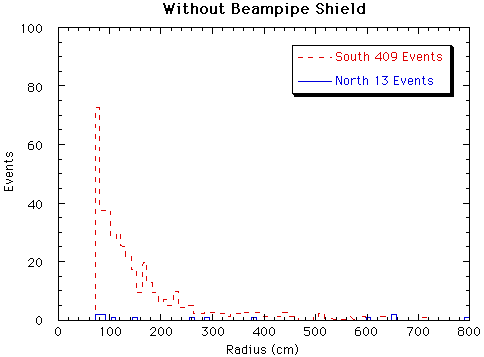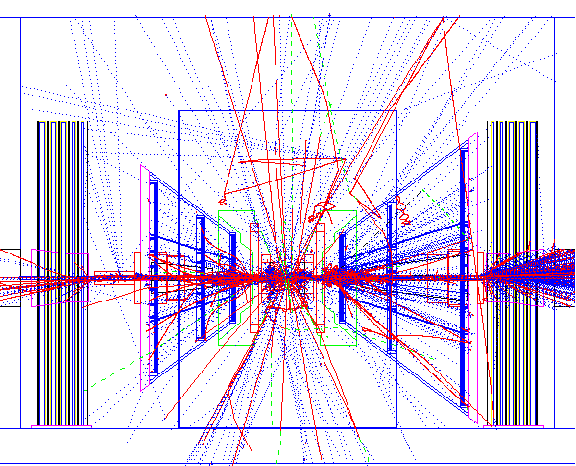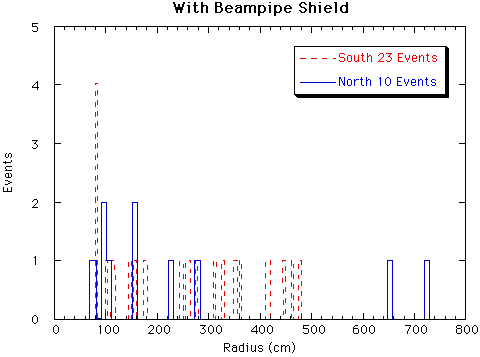
P.L. McGaughey
Los Alamos National Laboratory, Los Alamos, NM 87545
(phenix-muon-95-6; submitted: 25 April 1995)With assistance from Joel Moss, I've begun to look at the performance of the South Muon Arm. A problem with the design of the arm is immediately apparent. There is a large amount of additional rate on the first plane of the muon identifier. These are mainly soft hadrons and electrons created by showers occuring at the inner radius of the muon magnet "donut". Figure 1 shows the GEANT tracks resulting from 10 p-p collisions at sqrt-s = 200 GeV from the UA1 event generator. The South Muon Arm (on the left side of the figure) has an obvious problem in comparison with the North Muon Arm.
Figure 2 shows histograms of the charged particle leakage into the first muon ID layer for the two arms, versus radius in cm, for 100 p-p events. The South Arm has a larger rate by a factor of 30, with most of the rate at small angles. I have not applied a minimum angle cut; for 10 degrees the radius is about 120 cm.

Figure 1: Tracks from 10 PISA p-p events at sqrt-s = 200 GeV with the UA1 event generator without a shield around the beampipe.

Figure 2: Histograms of the radius of charged particles striking the first muon identifier plane on the North and South Muon Arms in 100 p-p events.
A possible cure for this problem is the addition of a cylinder of absorber material, placed between the muon ID and the back of the muon magnet. To study this, I have placed a 25-cm o.d. length of iron 140-cm long around the beam pipe, directly behind the "donut". Figure 3 shows the GEANT tracks for 10 p-p collisions, indicating that the situation is much improved. This is confirmed in Figure 4, which indicates that first muon ID layer of the south arm now has only twice the rate of the north arm.

Figure 3: Tracks from 10 PISA p-p events at sqrt-s = 200 GeV with the UA1 event generator this time with a 25-cm o.d. iron shield around the beampipe.

Figure 4: Histograms of the radius of charged particles striking the first muon identifier plane of the North and South Muon Arms in 100 p-p events with the shield in place.
Increasing the outer diameter of this cylinder can only improve the situation, but at the cost of increasing weight. I estimate that the cylinder of iron weighs about 2 metric tons. It could be fabricated in two half cylinders, which attach to the back of the muon magnet. One might wish to use copper instead of iron. This would also help, since copper has shorter radiation and interaction lengths than iron. It would also avoid any perturbations on the magnet field.